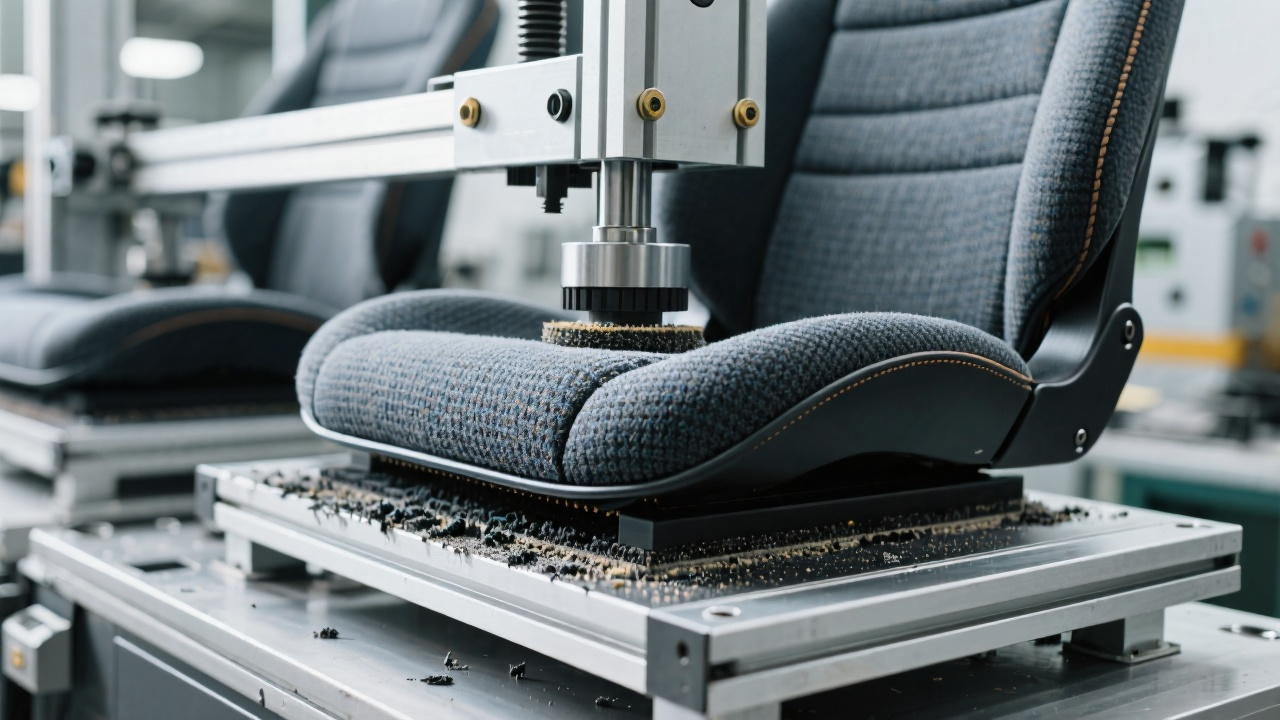How to Select Appropriate Seating for University Lecture Halls: Balancing Comfort, Durability, and Aesthetics
Choosing college classroom seating requires a balance of comfort (affects concentration), durability (long-term return on investment) and aesthetics (enhances ambiance). This article provides a professional guide to help schools make informed decisions.
- How to Select Appropriate Seating for University Lecture Halls: Balancing Comfort, Durability, and Aesthetics
- The Importance of Lecture Hall Seating
- Comfort: The Primary Factor
- Durability: Lifespan and Maintenance
- ANSI/BIFMA X5.4-2020 Test Standards
- Material Requirements
- Aesthetics: Enhancing Professionalism
- Balancing Comfort, Durability, and Aesthetics
- Conclusion
How to Select Appropriate Seating for University Lecture Halls: Balancing Comfort, Durability, and Aesthetics
In the university teaching environment, selecting appropriate lecture hall seating is crucial. Comfort affects student focus, durability relates to long-term return on investment, and aesthetics enhance the overall atmosphere. This article details how to balance these three core factors, providing a practical guide based on professional knowledge and real-world experience to help schools make wise decisions.
The Importance of Lecture Hall Seating
Lecture halls are core teaching spaces in universities, and seating, as a key component, directly impacts teaching quality and student health. Poor choices may lead to discomfort from prolonged sitting, distraction, and even affect learning outcomes. Therefore, schools should prioritize ergonomic seat design to ensure adaptation to students of diverse body types while coordinating with the campus layout.
The comfort of the seat is crucial in scenarios of prolonged listening or studying.
Ergonomic design: the back of the chair needs to have good lumbar support, and the seat cushion should be moderate and soft to prevent fatigue.
Breathable material: It is recommended to use breathable fabric or perforated PU leather to avoid sweating after sitting for a long time.
Suitable seat tilt angle: usually 8-12 degrees backward tilt, which can enhance the naturalness of sitting posture and viewing angle.
Comfort: The Primary Factor
Comfort is the primary consideration in seat selection. Choosing materials like high-resilience foam or memory foam provides adequate back support and legroom, effectively reducing fatigue from prolonged sitting. Ergonomic designs such as adjustable height and tilt accommodate varying lecture durations. Experience shows that regularly testing seat comfort (e.g., through student feedback surveys) significantly boosts classroom engagement.
The comfort of the seat is crucial in scenarios of prolonged listening or studying.
Ergonomic design: the back of the chair needs to have good lumbar support, and the seat cushion should be moderate and soft to prevent fatigue.
Breathable material: It is recommended to use breathable fabric or perforated PU leather to avoid sweating after sitting for a long time.
Suitable seat tilt angle: usually 8-12 degrees backward tilt, which can enhance the naturalness of sitting posture and viewing angle.
| Ergonomic parameters | |
| Seat height | 43-48 cm (adult standard), ensure that the feet are flat and the knees are at 90° |
| Body-leg angle | 105°-115°, to avoid compression of abdominal blood vessels and nerves |
| Backrest design | AAngle ≥ 90° , lumbar support and height adjustment need to be provided Seat depth/width: need to match the anthropometric data, mismatch can lead to spine health problems |

Durability: Lifespan and Maintenance
Durability involves seating lifespan and maintenance costs. Using wear-resistant materials like reinforced plastic frames and stain-resistant fabrics extends service life to over 10 years. Opt for easy-to-clean designs to reduce daily upkeep. Real procurement cases demonstrate that investing in high-quality seating, despite higher initial costs, saves on long-term replacement expenses, especially in high-usage lecture halls.
ANSI/BIFMA X5.4-2020 Test Standards |
||
|
Test Item |
Requirement |
Description |
|
Seat Impact Test |
≥100,000 cycles |
Simulates frequent sitting and standing in daily use |
|
Backrest Strength Test |
≥120,000 cycles |
Ensures stability during long-term use |
|
Rotation Durability Test |
≥120,000 rotations |
For swivel chair design (360° rotation) |
Material Requirements |
||
|
Material Component |
Requirement |
Purpose/Description |
|
Metal Frame |
Powder-coated anti-corrosion treatment |
Ensures service life ≥10 years in humid environment |
|
Fabric |
Abrasion resistance >50,000 rubs |
Maintains a neat appearance |
|
Load-bearing Structure |
Passes 240 lbs lateral load test |
Prevents accidental tipping |

Aesthetics: Enhancing Professionalism
Aesthetic design elevates the lecture hall's professional image and atmosphere. Select modern, minimalist styles that blend with campus architecture—such as warm tones for a cozy feel or dark tones for stability. Aesthetic elements like coordinated seat colors and lines influence student mood and concentration. Authoritative advice: conduct on-site pairing tests to ensure seats are visually appealing without causing distraction.
Lecture hall is not only a teaching space, but also the window of the school's image, the appearance of the seat design must be coordinated with the overall architectural style.
Uniformity of color matching: recommend the use of the main campus colors, or with the wall, the ground to form a visual echo.
Modern, simple and generous style: avoid complex modeling, with clean lines and coordinated materials.
Customizable color scheme and embroidered LOGO: enhance the sense of space exclusivity and brand recognition.
Balancing Comfort, Durability, and Aesthetics
Balancing these factors requires comprehensive assessment of usage scenarios. Recommended steps include on-site trials, consulting professional designers, and budget-based prioritization (e.g., comfort over aesthetics). Real experience indicates that creating a procurement checklist (e.g., meeting safety certifications) streamlines decisions and maximizes long-term value.
Lecture hall seating configurations also need to take into account space efficiency and diverse functions.
Fixed seats and rows of chairs: suitable for large lecture halls, neatly arranged and easy to manage.
Folding backrest/turning cushion: saves aisle space, easy to enter and exit.
With writing board function: to meet the needs of temporary note-taking, examination and meeting.
Power supply and USB interface integration (optional): provides convenience for digital learning.
Conclusion
In summary, meticulous selection of lecture hall seating significantly enhances the university teaching environment. Prioritize the balance of comfort, durability, and aesthetics to create healthier, more efficient learning spaces for students and teachers. Future continuous optimization of seat design will support educational innovation.
A set of well-designed, comfortable and durable lecture hall chairs that blend with the architectural style not only enhances the listening experience of students and guests, but also reflects the professionalism and taste of the university. During the selection process, it is recommended to work with an experienced and professional seating manufacturer to customize the optimal solution that meets your needs and budget.
If you are looking for reliable lecture hall seating solutions, welcome to visit our website leadsunseating.com for more product details and customized services.
Keywords: University Lecture Hall Seating, Comfortable Seating, Seating Design

Commercial Beam Seating Solutions for High-Traffic Public Spaces

The Ultimate Guide to Waiting Area Chairs: Design, Durability, and Discerning Choices for 2026

The Ultimate Guide to Choosing Classroom Chairs: Enhancing Learning, Comfort & Durability for Modern Education

Waiting Area Seating: 5 Major Trends & How to Choose the Right Solution

Application of Aluminum Alloy Die Casting in Airport Seating
One Stop Airport Terminal Seating
How do you ensure seat installation doesn't disrupt airport operations?
We’ll develop a detailed installation plan, giving priority to non-peak hours for construction. We also use a modular installation approach to minimize any impact on airport operations.
Are there any successful cases we can refer to?
We’ve provided services to numerous international and major domestic airports. We can offer detailed case materials, on-site photos, and client testimonials, so you can get a clear understanding of the solution’s effectiveness.
What are the advantages of the one-stop solution compared to traditional procurement methods?
The one-stop solution integrates the entire service process, saving communication costs and time. It avoids coordination issues that arise when working with multiple parties and ensures consistency and coherence in design, production, and after-sales service.
Can the solution meet the needs of airports of different sizes?
Whether it’s a small regional airport or a large international hub, we can customize the seating types and layout plans according to passenger flow, terminal area size, and functional positioning. This ensures we flexibly meet the requirements of all types of airports.
FAQs
What is the lead time for custom seating orders?
The lead time for custom seating orders varies depending on the complexity of the design and the order size. Typically, it takes 4-6 weeks for production, with shipping times depending on your location.

LS-9352 Mobile Double Student Desk | Anchor-Free Lecture Hall Seating by Leadsun Seating

LS-9361 Portable Aluminum Student Desk | Lecture Hall Seating by Leadsun Seating

LS-9362 Portable Dual Student Desk | Lecture Hall Seating Solutions by Leadsun Seating

ADC12 Aluminum Ergonomic Chair LS-9313 – Ventilated & Customizable | Leadsun Seating
Ready for your public seating project?
We specialize in providing high-quality, customizable seating solutions for public spaces, and we are excited to assist you with your project.
Our professional team will quickly answer your questions and provide customized solutions to ensure you have a worry-free experience.









 Scan QR Code
Scan QR Code